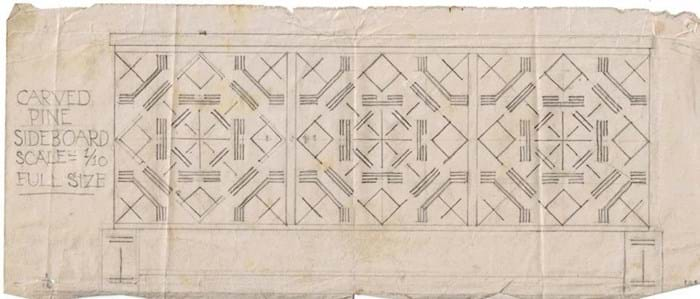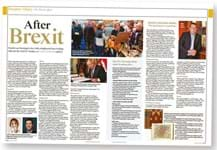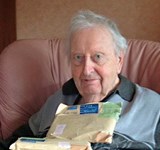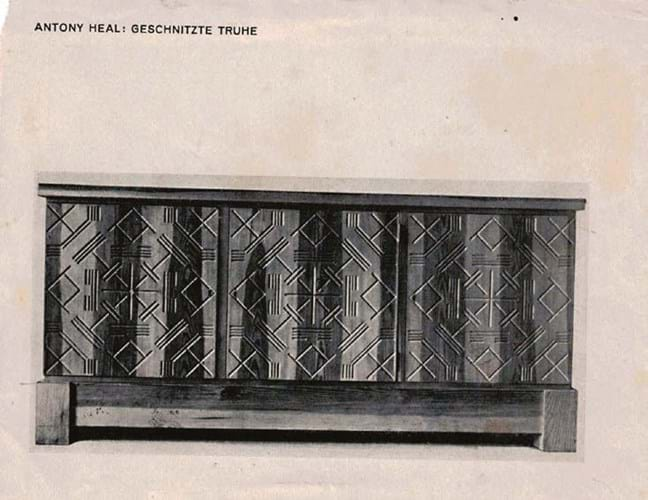
In 1926 Ambrose Heal (later Sir Ambrose) arranged for his 19-year-old son Anthony to spend some time with the renowned German designer Siegfried von Weech.
Von Weech is now remembered for his postage stamp designs and the origin of the eagle coat of arms still used in the German parliament building. However, he also ran a craft-weaving enterprise and a marble mosaic and scagliola workshop.
During his time in Munich, Anthony worked on scale drawings for mosaics but was also encouraged to produce his own original designs. He produced a decorative geometric pattern for the front of a chest which he then made and carved in pine at the Munich Kunstgewerbe Schule supervised by Ludwig Eickemeyer.
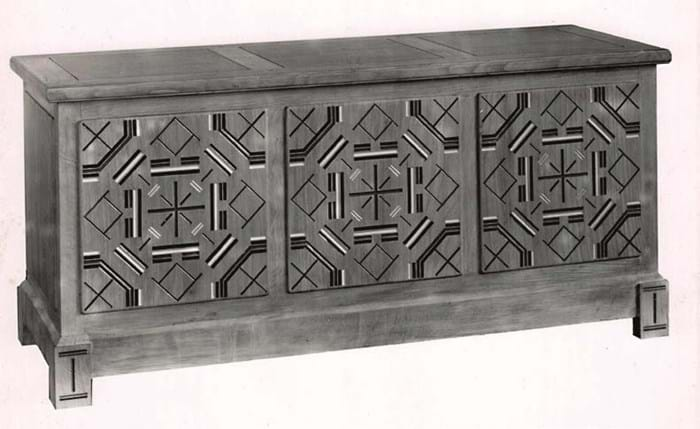
Cedar chest designed by Anthony Heal made in 1927 in England.
Originally intended to be a sideboard with three doors, it became a chest with a fixed front which was exhibited at the Münchner Lehrwerkstätte Jubilee Exhibition in 1927.
Evidence has just emerged from surviving letters that Ambrose was so enthusiastic about his son’s design that he had another version of it made in London. This one was made in cedar and Ambrose suggested it could be improved by inserting colour into the carved grooves. A photo of the chest survives in the Heal archive held by the V&A (neg no 2861) but the story behind it has only just been found.
When I wrote my book Sir Ambrose Heal and the Heal Cabinet Factory* I was unaware of the background story to this image and the creation of the chest.
But what happened to these chests, one in Germany and one in England?
Do any of your readers happen to know if either of them have survived or what became of them? Has anyone any information to add to their stories?
Oliver Heal [grandson of Ambrose Heal, son of Anthony Heal]
Beaconsfield, Bucks
* The book is still available through bookshops or direct from Unicorn Publishing. It can also be found in some online bookstores.
ATG note: The Heal’s archive was given to the Victoria and Albert Museum. A first batch arrived in 1978. In 1994 the second and final part was delivered to the Archive of Art and Design at Blythe House, organised by Colin Pilgrim who was running the company by then. Pilgrim arranged for the ‘museum’ of Ambrose Heal furniture which had previously furnished the boardroom to be sold through Sotheby’s and it was this which funded the cataloguing (enough money to employ an archivist for 14 months and a conservator for three months).

